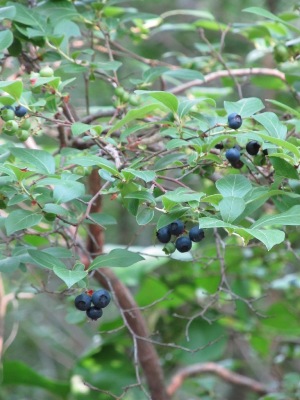In the Chesapeake Bay watershed, a wide range of native plants are suitable for landscaping and shoreline restoration projects. Native plant species include grasses, wildflowers, ferns, herbaceous plants, shrubs, trees, and other plants.
Native grasses are useful for constructing and maintaining shoreline habitat. Grasses help retain soil, prevent erosion, and provide feeding areas for birds and other wildlife. A variety of native grasses are salt tolerant and thrive in areas which are prone to flooding.
Several species of herbs and emergents are also tolerant to flooding, shade, and other environmental extremes. Many of these plants produce brilliant flowers or unique foliage.
Several native plant species produce berries. Some plants, such as blackberries, are low growing, while others are classified as shrubs or small trees. Blackberries, blueberries, wild cherries, serviceberries, and several other plants bear edible fruits for humans as well as wildlife. Others are not suitable as food for humans, but provide important food sources for wildlife.
The Chesapeake Bay watershed is home to scores of native trees. Several native conifers as well as deciduous tree species are suitable for the wide range of habitats found in throughout the watershed. For swampy areas, conifers include bald cypress, white cedar, pitch pine, and marsh pine.
Several members of the conifers are also well suited for dryer soils. These include eastern hemlock, loblolly pine, yellow pine, red cedar, American holly, and others.
Deciduous fruit and nut trees are well represented in the Chesapeake Bay region. Among the most common fruit bearing trees are wild cherry, choke cherry, persimmon, wild plum, beach plum, and others.
Nut bearing trees include several species of hickories, hazelnuts, and black walnuts. In addition to nut trees, oaks provide food and shelter for wildlife. The Chesapeake Bay watershed is home to several oak species, including trees suitable for wet or dry soil conditions.
For applications where flowering trees are desired, tulip tree, white fringetree, sweetbay magnolia, crabapple, American dogwood, or other species can be planted.
Related Information

Leave a Reply
You must be logged in to post a comment.